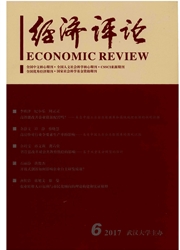

 中文摘要:
中文摘要:
条件风险价值(CoVaR)能够很好地度量风险溢出效应,是度量系统性风险的有效指标之一。计算CoVaR有多种方法,其原理不尽相同,需要合理选用方能有效评估系统性风险。分位数回归法、Copula函数法以及DCC—GARCH模型是比较典型的三种方法。本文以风险溢出关联特征为视角,从计算原理、优缺点与适用场合三个方面,对这三种计算方法做了理论比较研究。然后,分别测算了中国银行业的CoVaR,并做了有效性假设检验与比较。理论与实证研究结果均表明,对于计算CoVaR,与分位数回归法相比较,Copula函数法与DCC—GARCH模型更加有效,能够更好地评估银行业与金融体系之间的风险溢出效应。
 英文摘要:
英文摘要:
CoVaR is a good measure for risk spillover effect and systemic risk. It is necessary to select an effective one from many ways of calculating CoVaR according to different theories, three popular ways of which are quantile regression, Copula function and DCC - GARCH model. We propose a theoretical comparison of these three methods on calculation principles, advantages and disadvantages, as well as their applicable occasions. Then we calculate CoVaR of China banking system using three methods and test their effectiveness. From theoretical and empirical results, we find that Copula function and DCC - GARCH model are more effective and do better in describing risk spillover effect between banking system and financial system compared with quantile regression.
 同期刊论文项目
同期刊论文项目
 同项目期刊论文
同项目期刊论文
 期刊信息
期刊信息
